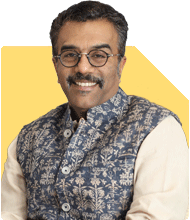Ramalingam Kalirajan |2476 Answers |Ask -Follow
Mutual Funds, Financial Planning Expert - Answered on Apr 30, 2024
He has an MBA in finance from the University of Madras and is a certified financial planner.
He is the director and chief financial planner at Holistic Investment, a Chennai-based firm that offers financial planning and wealth management advice.... more

Dear Sir, please advise corpus needed for a sixty year old to retire in Delhi area assuming no loans and all children settled with own housing. My monthly expense now is Rs 1.75L
Given your monthly expenses of Rs 1.75 lakh, we can project your annual expenses and account for inflation to determine your future financial requirements. Additionally, consider any healthcare costs or other unforeseen expenses that may arise during retirement.
Since your children are settled with their own housing and assuming no outstanding loans, your focus should be on maintaining your current standard of living and covering essential expenses, including healthcare and leisure activities.
Considering your location in Delhi, where the cost of living may be higher, it's essential to factor in any regional variations in expenses.
Once we have a clearer picture of your financial needs, we can calculate the corpus required to generate a steady income stream during retirement. This corpus can come from various sources, including retirement accounts, investments, and pension plans.
Consulting with a Certified Financial Planner will provide personalized guidance tailored to your specific circumstances and help you plan effectively for a comfortable and secure retirement. With careful planning and diligent saving, you can embark on this new chapter of life with confidence and peace of mind.
You may like to see similar questions and answers below
Sunil Lala |190 Answers |Ask -Follow
Financial Planner - Answered on Mar 31, 2023
Ramalingam Kalirajan |2476 Answers |Ask -Follow
Mutual Funds, Financial Planning Expert - Answered on May 01, 2024
Ramalingam Kalirajan |2476 Answers |Ask -Follow
Mutual Funds, Financial Planning Expert - Answered on May 02, 2024
Ramalingam Kalirajan |2476 Answers |Ask -Follow
Mutual Funds, Financial Planning Expert - Answered on May 08, 2024
Ramalingam Kalirajan |2476 Answers |Ask -Follow
Mutual Funds, Financial Planning Expert - Answered on May 13, 2024
Chocko Valliappa |237 Answers |Ask -Follow
Tech Entrepreneur, Educationist - Answered on May 17, 2024
Chocko Valliappa |237 Answers |Ask -Follow
Tech Entrepreneur, Educationist - Answered on May 17, 2024
Chocko Valliappa |237 Answers |Ask -Follow
Tech Entrepreneur, Educationist - Answered on May 17, 2024
Chocko Valliappa |237 Answers |Ask -Follow
Tech Entrepreneur, Educationist - Answered on May 17, 2024
Ramalingam Kalirajan |2476 Answers |Ask -Follow
Mutual Funds, Financial Planning Expert - Answered on May 17, 2024
Ramalingam Kalirajan |2476 Answers |Ask -Follow
Mutual Funds, Financial Planning Expert - Answered on May 17, 2024
Ramalingam Kalirajan |2476 Answers |Ask -Follow
Mutual Funds, Financial Planning Expert - Answered on May 17, 2024
Ramalingam Kalirajan |2476 Answers |Ask -Follow
Mutual Funds, Financial Planning Expert - Answered on May 17, 2024
Ramalingam Kalirajan |2476 Answers |Ask -Follow
Mutual Funds, Financial Planning Expert - Answered on May 17, 2024
Ramalingam Kalirajan |2476 Answers |Ask -Follow
Mutual Funds, Financial Planning Expert - Answered on May 17, 2024


















.jpg)

